Ukrainian community identities` variability of manifestation in the sphere of media under the influence of war
Main Article Content
Abstract
Relevance. The prolonged war has left its mark on all aspects of life of Ukrainians and society in general. Transformations in the current conditions are also affecting the community identities of Ukrainians, which are complex and multifaceted by their essence and structure. One of the potential spaces for the manifestation of community identities is the sphere of media, especially its segment realized through the Internet. Therefore, it is important to understand how different types of identities are manifested in this sphere.
The purpose of the study is to identify the manifestations of community identities of Ukrainians in the media sphere.
Methodology. The research methods included an online survey, correlation analysis using Spearman’s rank correlation, descriptive statistics, comparative analysis, interpretation, and generalization of the results.
Main results. Four types of complex identities of Ukrainians were identified. The most common among Ukrainians are the local-civic-professional (LCP) identity (53.7%) and the European-civic-professional (ECP) identity (46.3%), while the local-East Slavic (LES) identity (33.6%) and the East Slavic-religious (ESR) identity (21.9%) are comparatively less represented. The study revealed the manifestations of identities in the sphere of media in the following areas: the expression of civic identity in mass communication, trust in media and social networks, sources of information, the ability to freely express personal opinions in social networks, the supportive potential of media and social networks, the impact of media content and social networks on emotional and psychological well-being, engagement in war-related and political news, interaction with the global community. The research identified the significant role of identity types in Ukrainians’ interaction with the media space, their consumption of information, and their level of social activity in the media.
Practical significance of the results. The identified manifestations of Ukrainian identities can be applied in the development of communication strategies and in counteracting disinformation and propaganda. They also provide insights into areas where potential conflicts or societal consolidation may arise. The further perspective of the study is to explore the interaction of Ukrainian identities in the media sphere.
Downloads
Article Details
References
Korobka, L. (2023). Vydy spilnotnykh identychnosteі: problemy transformatsii ta vzaіemodii v umovakh viіny [Types of community identities: Problems of transformation and interaction in conditions of war]. Problems of Political Psychology, 13(27), 86–97. https://doi.org/10.33120/popp-Vol13-Year2023-126 (in Ukrainian)
Kravchuk, S. (2023). Osoblyvosti otsinky voіenno-politychnykh podiі yak efekty vzaіemodii lokalnoi i hromadіanskoi identychnosteі [Peculiarities of the assessment of military and political events as effects of the interaction of local and civic identities]. Habitus, (50), 153–157. https://doi.org/10.32782/2663-5208.2023.50.27 (in Ukrainian)
Kyrychenko, Y., Brik, T., Linden van der, S., et al. (2024). Social identity correlates of social media engagement before and after the 2022 Russian invasion of Ukraine. Nature Communications, 15, 8127. https://doi.org/10.1038/s41467-024-52179-8 (in English)
Moskvych, O. D. (2014). Mediarealnist yak suchasnyі sotsiokulturnyі prostir [Media reality as a modern socio-cultural space]. Sociological Studies, 2(5), 52–56. (in Ukrainian)
Naydonova, L. (2022). Mediapsykholohiіa viyny yak osnova kontseptualnykh transformatsiі mediaosvity: vid mediatravmy do travmainformovanykh praktyk [Media psychology of war as the basis of conceptual transformations of media education: From media trauma to trauma-informed practices]. Problems of Political Psychology, 12(26), 173–197. https://doi.org/10.33120/popp-Vol26-Year2022-109 (in Ukrainian)
Naydonov, M. I., Hryhorovska, L. V., & Naydonova, L. A. (2024). Stavlennіa do media yak skladnyk yakosti zhyttіa v mediatekhnolohizovanomu sotsiumi: refleksyvnyі analiz [Attitude towards the media as a component of the quality of life in a media-technological society: Reflective analysis]. Journal of Modern Psychology, 1(2024). https://doi.org/10.26661/2310-4368/2024-1-10 (in Ukrainian)
Vasіutynskyі, V. (2023). Zmina stavlennіa do vlady yak naslidok vzaіemodii sotsiyalnykh identychnosteі [Change of attitude towards the authorities as a result of the interaction of social identities]. Problems of Political Psychology, 14(28), 7–23. https://doi.org/10.33120/popp-Vol14-Year2023-137 (in Ukrainian)
Vinkov, V. (2022). Bezpekovi aspekty rozvytku identychnosti v umovakh viіny [Security aspects of identity development in conditions of war]. Problems of Political Psychology, 12(26), 138–150. https://doi.org/10.33120/popp-Vol26-Year2022-100 (in Ukrainian)
Zinchyna, O. B., & Tokar, V. S. (2017). Mediaprostir suchasnoho suspilstva: problemy definitsii [Media space of modern society: Problems of definition]. In Proceedings of the VII International Scientific and Theoretical Internet Conference “City. Culture. Civilization”, 2017 April, Kharkiv, pp. 82–85. (in Ukrainian)
